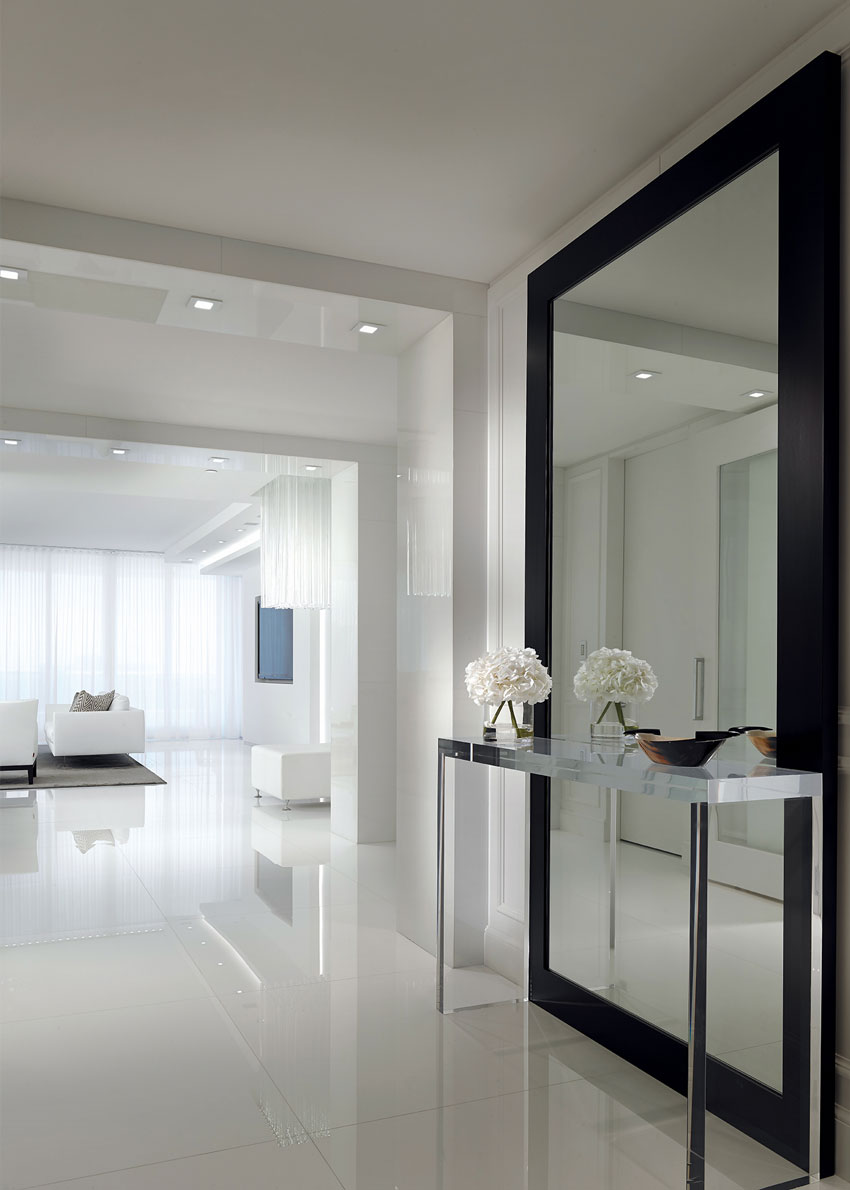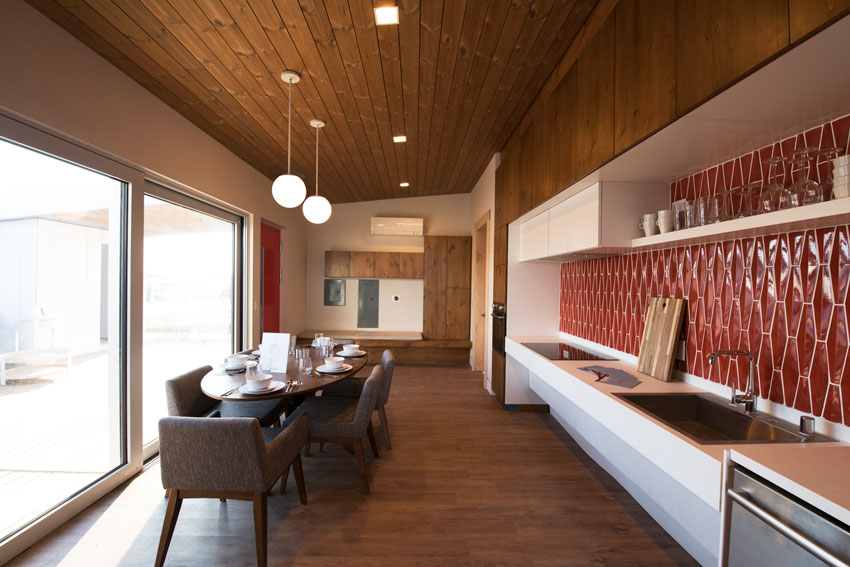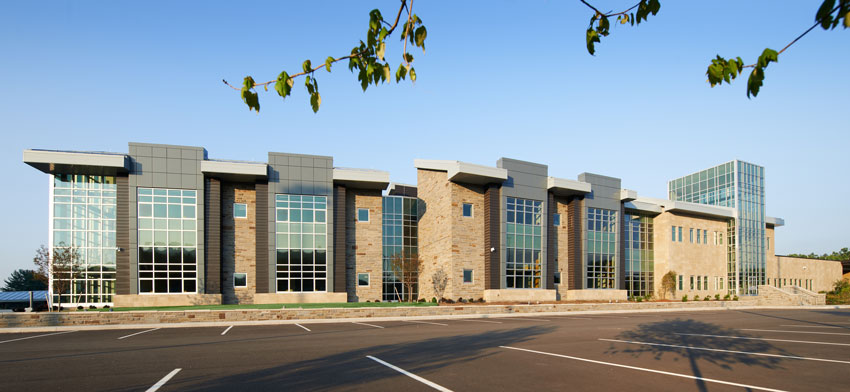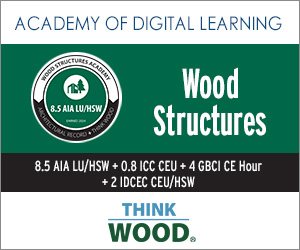Sustainability Without Compromise
Fire Resilience
Stone wool insulation is a key component within NFPA 285-compliant wall assemblies. The material is noncombustible, resisting fire up to 2,150 degrees Celsius (3,902 degrees Fahrenheit), and will not develop toxic smoke or promote flame spread, even when directly exposed to fire, as some other insulation materials do. This means that designers effectively create fire barriers wherever the stone wool insulation is used on the exterior or interior of a building.
Acoustic Capabilities
The density and non-directional fiber structure of stone wool products give it excellent acoustic properties. When used in exterior wall systems, the insulation can prevent the sounds of traffic and trains or other construction projects from disturbing the peace of the interior environment. In addition, incorporating stone wool insulation into internal and separating walls reduces airflow, thereby decreasing sound transmission across the wall system.
Water Properties
Stone wool insulation is hydrophobic, which means it repels water. This vapor-permeable solution offers unparalleled moisture management and excellent drying potential. If the product comes into contact with water, it will dry out quickly and maintain its original R-value. Stone wool products resist the growth of mold and mildew and are GREENGUARD-certified low emission, contributing toward better indoor air quality.
Circularity
Stone wool insulation products are produced with igneous rock, a sustainable raw material, and recycled byproducts from other industries. Stone wool can also be recycled into new stone wool products creating a circular life cycle for stone wool insulation.
Energy Efficiency and Design Freedom
“Energy efficiency is playing an ever-increasing role in the design and construction of buildings,” says Kim Friedrich, marketing manager for ROCKWOOL. “Yet design freedom is the quintessential factor that makes architecture truly inspiring. While the challenges are rising, it’s possible to rise to the challenge by equipping buildings with high-performance envelopes. The impact of passive measures, like insulation, on the performance of a building envelope cannot be overstated. By pairing noncombustible stone wool insulation with cladding that brings the vision to life, designers provide the crucial passive fire protection and energy efficiency their clients and building codes demand, without limiting their creativity. Now, design freedom goes hand-in-hand with energy efficiency, fire safety, durability, resiliency, and constructability. Stone wool insulation delivers sustainable design without compromise.”
Sustainable Lighting: Energy Efficient, Long Life, Zero Landfill, and Comfortable
It is a well-known fact that LED lighting is often much more energy efficient than comparable fluorescent, halogen, or metal halide light sources. It may be surprising to learn that if every traditional bulb in the United States was switched to an LED light source right now, the country would need 44 fewer power plants, and it would create an energy savings equivalent to $30 billion dollars. That is a sizable reduction in the energy footprint of the United States with just the swap of a light source.

Photo courtesy of WAC Lighting
LED lighting can be manufactured in a zero-landfill facility, dramatically reducing the product’s environmental footprint that exists before it is installed into a space.
The conversation about sustainability, however, is broader than just energy savings. “The idea of sustainability is multifaceted,” explains WAC Lighting President Shelley Wald. “Energy efficiency is a part of the story, but it’s just a part. The impact of manufacturing, the life cycle of the product, and the functionality of the product all play a role. For a lighting solution, an LED fixture that operates 80–90 percent more efficiently than traditional lamps and lasts 25 times longer can also be manufactured in a zero-landfill facility and create a comfortable light environment that supports the various visual tasks that will be performed there. That, in totality, is a sustainable solution.”
Zero-Landfill Manufacturing
One of the largest polluters in the United States is the manufacturing process itself. The goal of Zero Landfill programs is to divert all solid waste from landfills, managing the impact that a product may make on the environment before it is purchased and used. There are verifiable tiers to the Zero Waste effort. Facilities that achieve a landfill waste diversion rate of 100 percent earn a Zero Waste to Landfill recognition. Facilities that earn a Virtually Zero Waste to Landfill certification achieve a landfill diversion rate of 98 percent or greater, and a Landfill Waste Diversion designation is earned by manufacturers that have achieved a landfill waste diversion rate of 80 percent or greater. There are lighting manufacturers who have achieved the Zero Waste to Landfill designation, and every decision impacts their ability to achieve this certification while making a more desirable and cost-effective solution. Here are a few examples.
Sustainable Decision: Use Aluminum Material
Aluminum is a very recyclable material and a fantastic heat sink for LED lighting fixtures. Using aluminum for a heat sink is a great example of a truly sustainable solution because it is one of the best thermally conductive materials, which makes it an ideal heat sink on these highly efficient lighting fixtures, and it can be melted down and reformed into another product perpetually, never entering a landfill.
Sustainable Decision: Powder Coating over Wet Spray Paint
The decision to finish a product with a powder coating or a wet spray paint also contributes toward the overall environmental impact of the manufacturing process. Powder coating is an environmentally friendly process that creates a more durable finish, without creating waste or sending chemicals into the water stream. The powder is applied to the product surface and then baked. Any powder that falls off during the application process is reused during the next application. Alternatively, the imprecision of the wet paint spray process creates waste with every application, and the paint that doesn’t hit the product can be sent into the local water supply when the area is cleaned.
Comfort and High-Efficacy Performance
Another important aspect of sustainability, especially when talking about the sustainability of a lighting solution, is the comfort of the visual environment it produces. If a product is highly efficient but creates an environment that is uncomfortable and difficult for people to work in, then it misses on a key criteria of sustainability.
Designing LED lighting products to be both highly efficient and successful in creating a comfortable visual space is a challenge in the industry today. In fact, the U.S. Department of Energy (DOE) recently completed a study evaluating the performance of several LED lighting products that claimed efficacies near or exceeding 200 lumens per Watt (lm/W). While the study validated that the fixtures performed as described by the manufacturer, in terms of efficacy, power draw, color temperature, and color rendering index (CRI) values, it revealed that five out of the seven fixtures received very low ratings for visual comfort and overall quality, with many observers complaining about the glare produced by the luminaires. The product that received the highest overall rating also had the lowest tested efficacy (136 lm/W), demonstrating that there is more to consider when selecting a sustainable fixture than efficacy alone.
Putting It All Together: The Solar Decathlon
The U.S. Department of Energy Solar Decathlon is an award-winning program that challenges collegiate teams to design, build, and operate solar-powered houses that are cost-effective, energy-efficient, and attractive. The competition was started in 2002 and takes place every two to three years.

Photo courtesy of WAC Lighting
“We wanted to use LED lighting fixtures because they are the most efficient, but the quality of light also creates that home feel,” explains Alla Elmahad from the University of Maryland, participant in the 2017 Solar Decathlon held in Denver.
During the 2017 competition held in Denver, teams designed zero-net-energy homes and competed in 10 contests that compared the design and performance of each project in terms of water use and reuse strategies, smart energy use, market potential, energy-efficient heating and cooling systems, occupant health and comfort, and innovation. The range of contests showcases the multifaceted nature of sustainable design: it must be energy efficient but also comfortable and beautiful.
Students remarked on the beauty and efficiency of the selected LED lighting fixtures. “We wanted to use LED lighting fixtures because they are the most efficient,” explains Alla Elmahad from the University of Maryland. “But the quality of light creates that home feel, and these fixtures create a really beautiful aesthetic that isn’t sharp but calm, which really makes it feel like a home.”
The Sustainability Benefits of Glass
Architects often consider glazing to be a major source of thermal gains and losses, which increases building energy consumption. However, with the right glazing products, building orientation, window-to-wall ratio, and shading elements, the glass facade can effectively control environmental factors such as heat, light, and sound. The result can be a beautiful, sustainable building that offers impressive energy management.
Performance Metrics: The Function of Glass
There are performance metrics that will describe how the glass manages the solar radiation to which it is exposed. It is important to note that solar radiation is comprised of different types of energies, including visible light and infrared and ultraviolet radiation. Direct exposure to solar energy will cause the interior of a building to increase dramatically in temperature, requiring large amounts of cooling to ensure a comfortable environment. The way that glass manages the available visible light and radiation directly impacts the comfort and energy performance of the building, which contributes toward the overall sustainability of the building. A building with direct sun exposure should be fitted with low solar-heat-gain, low-E-coated glass to help suppress cooling load requirements.

© Guy Cali Associates
The coated glass used in the Owego Elementary School in New York offers maximum heat flow resistance, while still allowing abundant natural light to pass into the building.
The performance metrics that help designers to select glass that will perform as necessary are the visible light transmittance, solar heat gain coefficient, and U-value of the glass.
Visible Light Transmittance (VLT)
Visible light transmittance (VLT) is the percentage (%Tvis) of visible light within the solar spectrum that is transmitted through glass.
Visible Light Reflectance
Visible light reflectance is the percentage of visible light within the solar spectrum that is reflected from the glass surface.
Solar Heat Gain Coefficient (SHGC)
The solar heat gain coefficient is the percent of solar energy incident on the glass that is transferred indoors both directly and indirectly through the glass and is quantified as a number between 0 and 1.
U-Value
A measure of the heat gain or loss through glass due to the difference between indoor and outdoor air temperatures. Some combinations of high-performing, low-E glass can bring U-value performance of double-glaze units close to that of triple glaze, providing maximum heat flow resistance while still allowing abundant natural light.
Notice

www.guardianglass.com

MitsubishiPro.com

www.rockwool.com

www.waclighting.com









